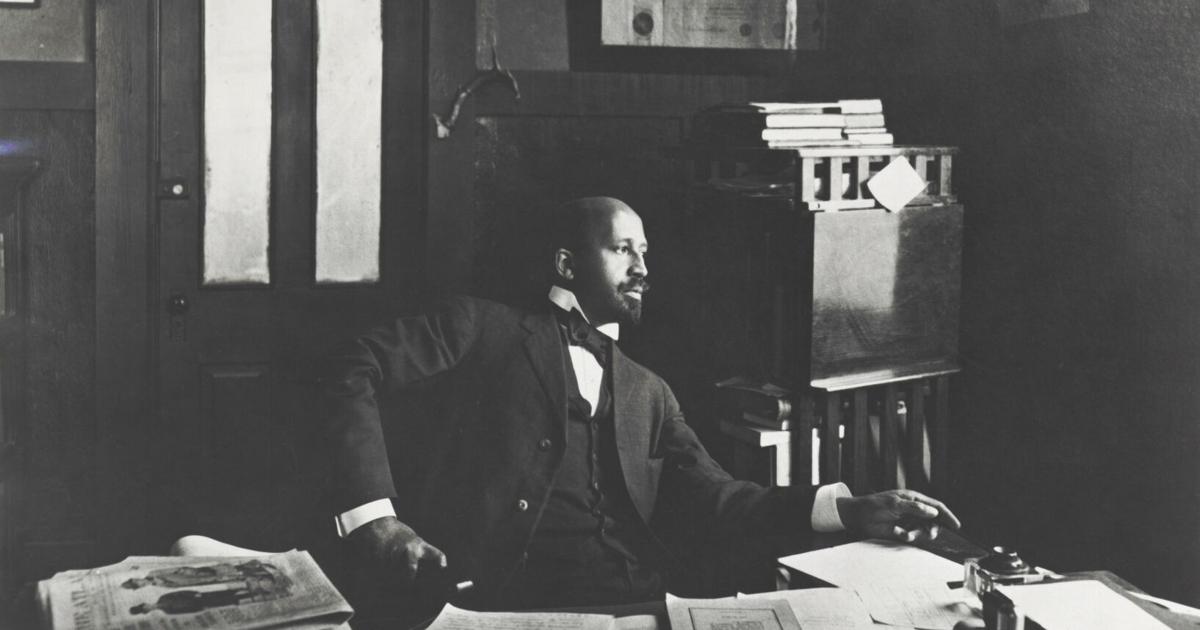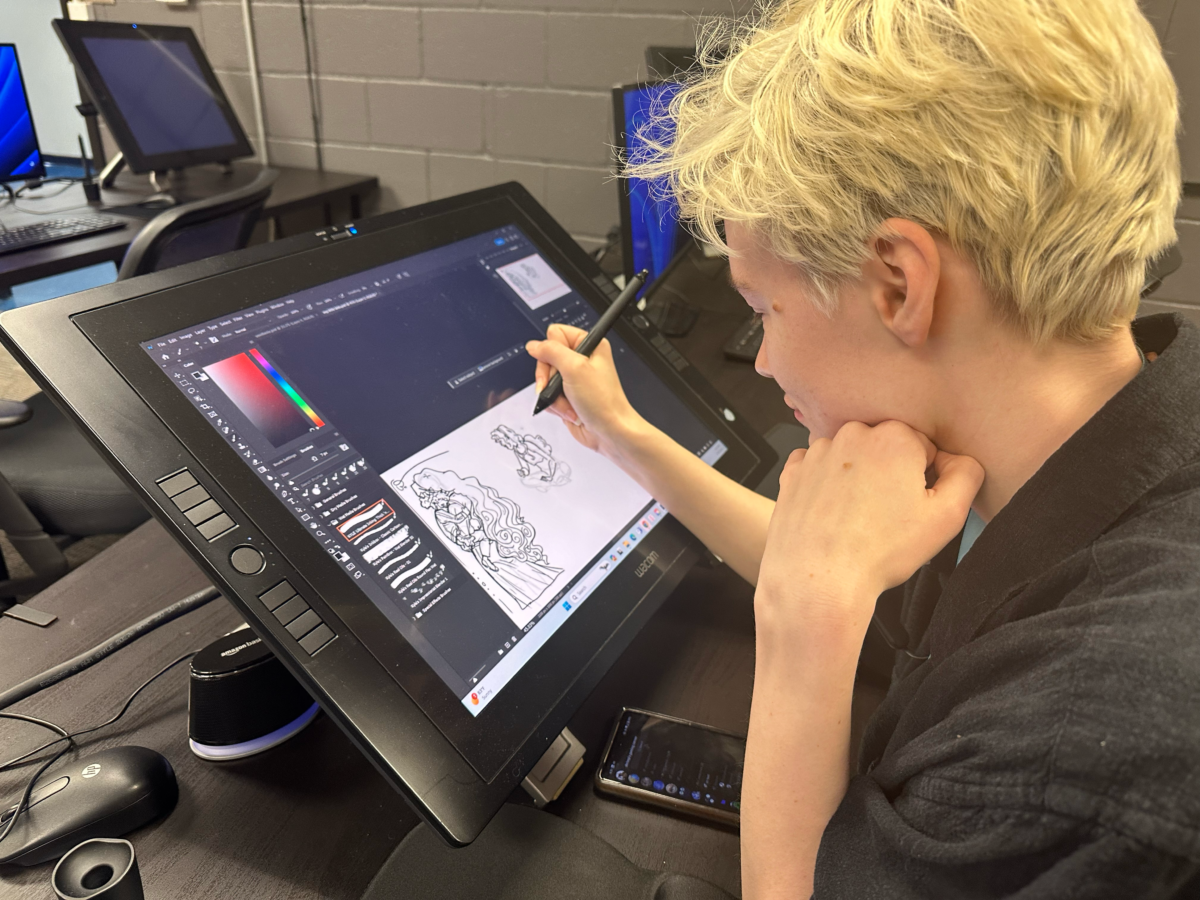Many Western New Yorkers may not realize a movement here early in the 20th century “morphed” into the creation of the National Association for the Advancement of Colored People (NAACP).
They also might not realize that Rosa Parks wasn’t the only African American to change civil rights history by refusing to sit in the back of a mode of transportation.
Or that lynchings early in the 20th century were advertised in advance as entertainment.
Those are only three of the interesting details in a compelling new hourlong documentary by Buffalo Toronto Public Media, “The Niagara Movement: The Early Battle for Civil Rights,” airing at 9 p.m. Nov. 6 on WNED-TV and on Buffalo Toronto Public Media’s YouTube Channel.

Booker T. Washington, pictured speaking to a crowd in Louisiana, circa 1915, did not like challenging the racial status quo. He is one of the men profiled in “The Niagara Movement: The Early Battle for the Civil Rights.”
The Niagara Movement was formed by famed author and sociologist W.E.B. Du Bois and newspaper publisher William Monroe Trotter in 1905. They combined to challenge Booker T. Washington, the de facto leader of African Americans.
People are also reading…
While Washington advocated accommodation to whites and to avoid challenging the racial status quo, Du Bois and Trotter chose using protests and eventually the courts to promote full equality and fight white supremacy.
The first meeting of 29 African American men was planned for Buffalo, but eventually held at the Erie Beach Hotel, in Fort Erie, Ont., once a key point in the Underground Railroad.
The film is produced by Lawrence Hott, who has made five films for Buffalo Public Media, including “Frederick Law Olmsted: Designing America.”

This photo shows some of the original members of The Niagara Movement.
With interviews with sociologists, historians, biographers and civil rights experts and file footage and illustrations, the eye-opening program has the look and sound of a Ken Burns film.
That isn’t surprising since Hott comes from the Florentine Films school of filmmaking where he, Burns and two other filmmakers produced documentary films in the late 1970s until the mid- to late-1980s before going their separate ways under the Florentine Films banner.
“We were like a rock group where everybody wanted to be the lead guitar or lead singer,” Hott said in a telephone interview. “But we never had a breakup. … We created a consortium under the rubric Florentine Films. I like to say that Ken Burns screwed it all up by becoming rich and famous.”
Hott has earned multiple awards producing documentary films since 1978, including an Emmy, a George Foster Peabody Award and two Academy Award nominations.
“The Niagara Movement” was inspired by Donald K. Boswell, the former chief executive officer of Buffalo Toronto Public Media.
Its continued relevance is evident at the film’s end when today’s rise of white supremacy and voter suppression is highlighted.
“Don had this idea 15 years ago and it took a long time to get the funding,” explained Hott. “But things have changed in the United States. George Floyd is one example, but there are a lot of other things that brought African American civil rights issues to the fore of the public mind. And as that happened, the money started coming through.”
He added that Buffalo Toronto Public Media seeks major productions that have national significance and a strong connection to Western New York.

Publisher William Monroe Trotter, pictured, used his Boston newspaper to criticize Booker T. Washington’s philosophy in dealing with the civil rights movement.
“When something is called ‘The Niagara Movement’ it’s pretty obvious that there’s a strong connection to Western New York,” he said. “And it was such an important story and the connection to what’s happening now. … Here is an inflection point that happened more than 100 years ago and sets the course of civil rights for more than a century. It’s a story that has not really been told very well. … People are beginning to see that it was much more important than originally perceived by historians.”
This film tells the story very well of the war of ideas and philosophies between Washington and the combination of Du Bois and Trotter while giving a portrait of all three men.
Washington was a brilliant orator from the south who was more concerned about the benefits of getting along, developing skills and obeying the white establishment than he was of equality. He controlled his message by taking over the influential Black press.

Author and sociologist W.E.B. Du Bois was one of the men instrumental in forming The Niagara Movement, the topic of a new PBS special.
Du Bois was an intellectual who became the first African American to get a doctorate from Harvard and favored protests to achieve equality after being changed by seeing a lynching of a man buried alive. Trotter was a Harvard graduate, too, who used his Boston newspaper to constantly criticize Washington.
“I think people will be surprised that there was such a division among the Black civil rights leaders so long ago,” said Hott. “And that division resonates today, has meaning today. Not that the civil rights movement is split the way it was in the 1890s through 1909 or so. But that the idea of strong protest and not acceptance of the status quo is still in the air, and that something has to be done, that you don’t just acquiesce.
“Washington’s approach of accommodation just doesn’t work. It’s never been a violent revolution. Obviously violent things happened. But the idea is to educate people about what their rights are and then pursue them through the courts as well as through strong protest and publicity and the idea that the NAACP didn’t just come out of nowhere.
“There were many other organizations, but The Niagara Movement really is the one that morphed into the NAACP. So that there’s a history before the history.”
One of the protests eventually settled in court involved Barbara Pope, who refused to sit in the back of a segregated train early in 1906. She isn’t as well-known as Rosa Parks, who refused to sit at the back of a bus in Montgomery, Ala., in 1955. Hott explained that’s because the civil rights movement was much bigger in the 1950s and the media was very different a half century earlier.
“One of my personal takeaways that we didn’t really emphasize in the film is there were many Barbara Popes and there were many Rosa Parks,” said Hott.
He added that the Parks case and the landmark Supreme Court case, Plessy v. Ferguson, which concerned Homer A. Plessy boarding a whites-only train car in New Orleans, were planned.
“Plessy and the train companies and the civil rights people and the police all knew Plessy was going to do it,” explained Hott. “Rosa Parks and the people she was working with knew she was going do it so they could plan it. Barbara Pope was spontaneous.
“At the time, Ida B. Wells, the great Black journalist who was documenting lynching, also refused to get off a train. Who gets the publicity depends on who’s the publicist and what’s happening at the time.”
As a sign of the times, Hott was aware of the importance of having an African American actress, Debra Wilson, be the narrator of the film.
When it premiered at WNED a few weeks ago, Hott said the “elephant in the room” was that it was made by a white producer.
“But almost everybody in the film is African American, including much of the crew, including almost all the advisers,” said Hott. “I felt it was important that the voices (of the readings) also were African American and they were very excited to be part of this film. Debra Wilson, who was an accomplished narrator, was just the right voice. I wanted somebody with gravitas who understood and appreciated the material and would bring enthusiasm to it.”
Like all Buffalo Toronto Public Media films, local viewers watching will appreciate learning important lessons about local history.
The film will be available for streaming nationally and distributed by American Public Television in February 2024 to public television stations across the country. It also will be available on the PBS app then.




